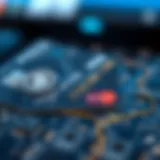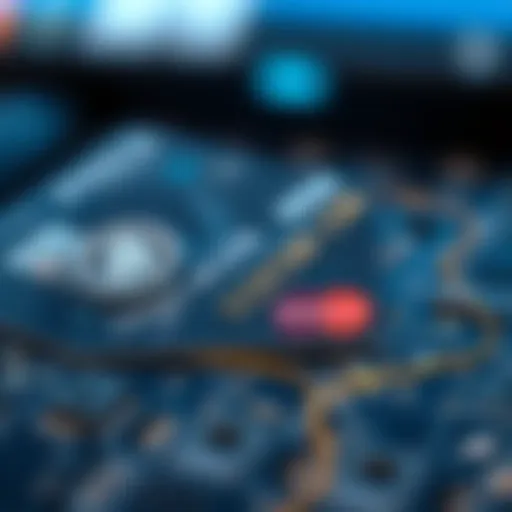Creating Generative Art NFTs: A Complete Guide
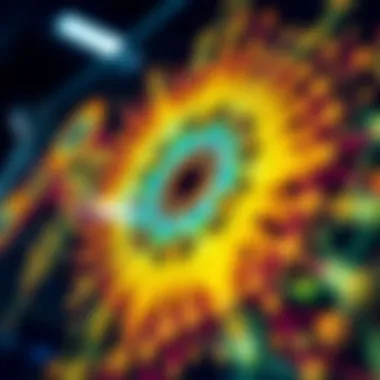

Intro
In today’s digital landscape, generative art NFTs represent a fascinating intersection of artistry and technology. Artists and tech enthusiasts alike are harnessing the power of algorithms to create compelling digital works that can be owned, traded, and showcased as non-fungible tokens. These unique digital assets not only enrich the online art scene but also challenge traditional notions of ownership and value.
This comprehensive guide aims at illuminating the various facets of creating generative art NFTs, whether you're a seasoned creator or a curious beginner. You will learn about the essential software, the algorithms that underpin generative design, and effective strategies for marketing and selling your work. As we embark on this journey, the focus will be on providing practical insights that empower you to thrive in this evolving sector.
Market Analysis
Understanding the market landscape is crucial for anyone looking to delve into generative art NFTs. Before setting foot in this domain, it is wise to keep an eye on prevailing trends and emerging opportunities.
Current Trends in Cryptocurrency
The cryptocurrency market has been like a rollercoaster ride, marked by sharp spikes and sudden drops. As of late 2023, NFTs are showing a resurgence in popularity, particularly as more platforms are dedicating space for artists to mint and trade their works. In particular, platforms such as OpenSea and Rarible have become valuable hubs for artistic expression and commerce.
Additionally, social media platforms continue to play an essential role in cultivating interest and engagement among potential buyers. Artists who adeptly use platforms like Twitter or Instagram can amplify their reach significantly.
Price Prediction Techniques
Predicting prices in this volatile market can feel like threading a needle in the dark. However, several strategies can help guide decisions:
- Market Sentiment Analysis: Keeping tabs on social media trends and community discussions is crucial. Tracking hashtags related to generative art can yield valuable insights.
- Historical Data Review: Analyzing past sales data of comparable NFTs can provide indicators of future value.
- Expert Opinions: Consulting reports and opinions from industry analysts can help ground your expectations with the reality of market dynamics.
"Investing in NFTs should always be an informed decision; ignorance can lead to missed opportunities or losses."
Investment Strategies
Entering the world of generative art NFTs doesn’t merely involve creating art; it also requires a strategic approach to investing.
Long-Term vs Short-Term Investing
- Long-Term Investing: This strategy focuses on acquiring NFTs with the belief that their value will increase over time. This requires patience and a keen eye for potential. Look for artists with a consistent track record or those who innovate within the genre.
- Short-Term Investing: On the other hand, short-term traders find value in market fluctuations. Buying NFTs that are in the spotlight can be advantageous, but it necessitates a solid grasp of market signals.
Risk Management in Crypto Trading
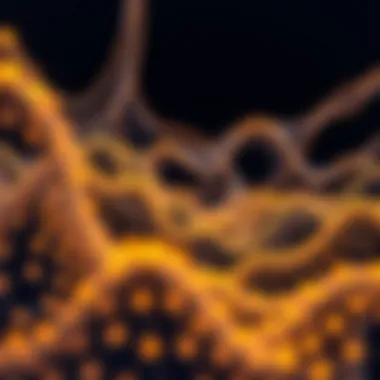

Risk management is paramount in navigating the crypto landscape. Here are some pointers:
- Diversification: Don’t put all your eggs in one basket. Spread your investments across various NFTs.
- Stay Informed: Regularly update your knowledge on shifts in regulation and technology within the NFT space.
- Limit Your Investment: Only invest what you can afford to lose; this helps mitigate potential losses and emotional stress.
Understanding Generative Art
Generative Art has carved out a compelling niche within the contemporary art landscape, intertwining creativity with technology in unprecedented ways. This section aims to shed light on the foundational elements of generative art, illustrating why grasping its essence is vital for anyone looking to navigate the evolving realm of digital artistry and NFTs. Understanding generative art is not just academic; it is a key lever in the process of creating distinctive digital works that resonate in the market.
At its core, generative art leverages algorithms and automated processes to produce unique visual representations. This approach allows artists to explore creativity in ways that transcend traditional methods, offering limitless possibilities. As such, generative art encourages experimentation and innovation, a characteristic that appeals immensely to today’s creators.
Moreover, a robust comprehension of this practice provides practical benefits. Artists who master generative techniques can produce works far more efficiently, making the art creation process both intuitive and engaging. In this digital era, where authenticity and originality are prized, delving into generative art can lead one to discover new pathways for artistic expression.
As no two algorithms yield identical results, artists can tap into this randomness, creating pieces that are not only visually arresting but also conceptually intriguing.
"By embracing randomness, generative artists are often at the forefront of redefining what constitutes art in modern spaces."
Understanding generative art fosters a deeper appreciation for technology’s role in creative processes and encourages artists to marry tradition with innovation. As we pertain to the historical context of generative art, it becomes evident how these artistic techniques took shape and influenced the broader art world.
Definition of Generative Art
Generative Art can be best defined as artwork that is created through the use of autonomous systems or algorithms. This often involves computer programs that follow specific instructions coded by an artist, allowing for a degree of randomness in the outcome. In essence, generative art is the manifestation of creativity wherein the artist sets the rules and the machine plays out the possibilities within those rules.
Consider the famed work of Harold Cohen, who developed the AARON program. AARON autonomously creates images based on the guidelines designed by Cohen. Such creations challenge traditional notions of authorship and raise questions about the role of the artist. Another crucial aspect is that generative art often results in unique pieces that cannot be reproduced, establishing a fit for NFTs—where uniqueness and ownership are paramount.
Historical Context
The roots of generative art run deep, tracing back to the early days of computation and algorithmic design. It gained traction in the 1960s when artists began to embrace new technologies and programming languages. Pioneers like Frieder Nake and Vera Molnar explored algorithm-based art, laying foundational principles that continue to influence the genre today. They experimented with computer-generated graphics and nurtured the idea of ‘art as a process’ rather than simply a result.
As computers became more widespread in the subsequent decades, the boundary between art and technology blurred further. The 1980s and 1990s saw the advent of software designed for artists, revolutionizing the way they approached creation. This era marked a significant shift, eventually evolving into what we recognize today as contemporary generative art—a marriage of creativity, technology, and interactivity.
In the past decade, the boom of NFTs has brought generative art into a spotlight that few could have anticipated. As artists capitalize on blockchain technology to mint their creations as unique tokens, the interest in generative techniques skyrocketed, providing fertile ground for innovation and creativity. This historical perspective not only enriches our understanding of generative art but also unveils the potential it holds for aspiring artists looking to forge their path in the digital domain.
The Technology Behind Generative Art
The highly intricate world of generative art is not just a playground for artists' imaginations but also an ever-evolving technological landscape. Understanding the technology that fuels generative art is key to grasping how these artworks come to life. The process essentially marries art with algorithms, enabling artists to establish a framework where creativity can flourish within defined parameters.
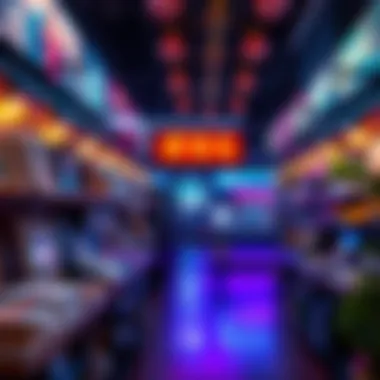

In this section, we will explore the backbone technologies including algorithms, programming languages, and the various software tools that empower creators to craft stunning NFT artworks. Through dissecting these components, readers will gain insight into both the artistic and technical considerations that are pivotal when venturing into the generative art space.
Understanding Algorithms
To put it simply, algorithms are step-by-step procedures or formulas for solving problems or achieving desired outcomes. In generative art, algorithms provide the foundational rules that guide the artwork’s formation. They determine how various elements, like shapes, colors, and patterns, interact with each other.
For instance, a simple algorithm could dictate that every time a particular number is generated, a random color is selected from a palette. Over time, this can lead to a delightful spectrum of visuals that morph and evolve with each render. This automated, procedural approach allows artists to create pieces that are unpredictable yet structured, which is central to the philosophy of generative art.
Programming Languages Used
In order to bring these algorithms to life, a few programming languages have become staples in the field. Their versatility and community support make them excellent choices for both beginners and seasoned artists. Here’s a closer look at three pivotal languages:
Processing
Processing stands out as an approachable yet powerful programming environment favored by artists. Primarily designed to serve as a bridge for those who may not be familiar with traditional programming, Processing emphasizes simplicity and immediacy. Its innate ability to create visual output with minimal code sets it apart as a popular choice for many generative art projects.
One of its most beneficial characteristics is the extensive library ecosystem. This means it's easier for newcomers to find resources and examples. However, one downside might be performance limitations when handling very complex visuals. While amateurs will feel right at home, advanced users may run into issues when pushing the envelope of real-time processing.
P5.js
P5.js extends the concepts of Processing into the realm of the web. It’s a JavaScript library that makes it easy to create interactive graphics in a web browser. The beautiful part of P5.js is that it allows for real-time engagement. Consequently, artists can design pieces that respond to user inputs, which is a fantastic way to make art more immersive.
The standout feature here is its ease of embedding artworks directly into websites, making sharing accessible to almost anyone. However, for those used to more performance-tuned environments, constraints in performance might present challenges for large-scale projects.
OpenFrameworks
OpenFrameworks takes a different route by providing a more intimate wrapper around C++, a language known for its performance and flexibility. This toolkit caters to creators who may require greater control over their programmatic processes. With OpenFrameworks, artists can leverage the speed of compiled languages while still enjoying a rich set of tools tailored for creative projects.
The significant edge here is the ability to handle complex graphics and extensive data processing. Yet, this power comes with a major trade-off; OpenFrameworks necessitates a steeper learning curve due to the intricacies of C++. Artists who do not have programming experience may find the initial hurdles to be rather daunting.
Generative Art Tools and Software
As technology advances, a variety of tools have emerged, empowering artists to explore generative art further. Let’s dive into some popular choices that can enhance the creative process:
Artbreeder
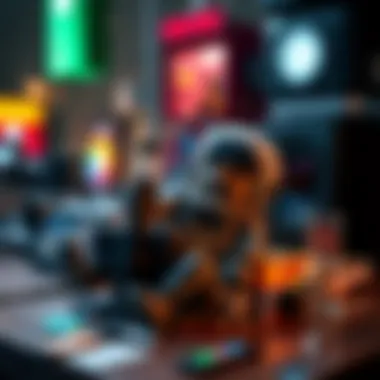

Artbreeder is an intriguing platform that combines machine learning with collaborative art-making. Users can blend different images to create entirely new artworks, which can be an excellent way for artists to explore possibilities without starting from scratch. This collaborative aspect enables a fusion of techniques and styles, diversifying outputs.
However, being heavily reliant on existing images can sometimes limit innovation. It’s critical for users to understand that while Artbreeder is a fantastic tool for inspiration, it might not completely replace traditional creation techniques.
Runway
Runway ML opens the door to those interested in machine learning and how it influences creative processes. By providing accessible tools for artists, Runway ML enables real-time collaboration and experimentation with various AI models. This can lead to exciting avenues in generative art production, allowing creators to push the limits of their imagination.
The appealing feature about Runway ML is its quite robust community and excellent documentation. Yet, the downside lies in the fact that artists need to familiarize themselves with basic machine learning concepts to fully harness its power.
GANPaint Studio
GANPaint Studio is a remarkable example of using Generative Adversarial Networks (GANs) in art. This software allows users to modify images in real-time, leading to content-aware results. Artists can paint directly on images to see instant changes; this interaction provides a unique experience in digital creation.
Though the focus on GANs can make it somewhat niche, it also opens the door for artists to experiment with advanced computational techniques. A caveat is that users might need to understand how GANs work to exploit them effectively.
In summary, the integration of algorithmic thinking and coding is vital in the realm of generative art. For artists and technologists alike, the selection of appropriate tools and languages can drastically shape their creative possibilities. Understanding these technologies not only enhances one’s art but also fosters innovation in how we perceive and interact with digital creativity.
Creating Artworks with Code
Creating artworks through code stands at the crossroads of creativity and technology. For artists venturing into the realm of generative art, understanding the intricacies of coding brings unique possibilities. This section unveils the practical steps and considerations when you're shaping your vision using programming languages and algorithms.
Generative art empowers artists. Using code allows for experimentation, iteration, and unpredictability. Artists can utilize algorithms to create a myriad of iterations from a single set of rules. Every output can vary significantly, making each piece distinct and often surprising. This fluid nature of generative art resonates well in the NFT space, where uniqueness is essential for value.
Setting Up Your Environment
Before one dives into coding, establishing a conducive environment is crucial. This entails selecting the right software and tools. To start coding generative art:
- Choose a Programming Language: Popular choices include JavaScript, Python, or Processing. Each has its strengths; for beginners, Processing offers an accessible way to visualize code.
- Install Necessary Software: Getting the right Integrated Development Environment (IDE) is key. IDEs like Visual Studio Code or the Processing IDE can streamline your coding process.
- Familiarize with Libraries: Depending on your chosen language, utilizing libraries such as p5.js (for JavaScript) or Turtle (for Python) can simplify drawing shapes and creating animations.
– Test Runs: Testing your setup with a few simple scripts helps ensure everything is in order before diving deeper into generative art.
Basic Code Structure for Generative Art
Code structures can vary significantly. Yet, a basic overview will denote what to consider when crafting your artworks:
- Setup Function: This initializes your canvas. For example, in p5.js, you define the size and background of your artwork.
- Draw Function: This is the heart of your code, where shapes and colors come to life. It continuously executes until the program stops.
- Create Shapes and Forms: Use functions to draw shapes. Basic commands often include , , and . Each of these can incorporate randomness for varying output.
- Incorporate Variables: Variables like colors, size, and positions can be randomized or algorithmically determined, allowing for rich, diverse artworks.
Here’s a simplified code example in p5.js: javascript function setup() createCanvas(400, 400); background(220);
function draw() let x = random(width); let y = random(height); let size = random(5, 50); ellipse(x, y, size, size);








